
Have you ever wondered why certain cheeses are aged for long periods while others are eaten fresh? And why are some cheeses easily meltable for soups or easily spread on toast and bagels, while others are easier to grate over salads and pasta?
It can be traced back to the cheesemaking process, particularly an important stage of cheese production — aging. While some may not give this much thought, it’s a fascinating topic that we aim to explore further in this article. We’ll begin by discussing why and how aging cheese improves its quality, comparing some aged cheeses to fresh cheeses for reference.
And if you can’t get enough of the cheese aging process after this, we’ll then examine this subject more in detail by looking at how different cheeses are aged. If you weren’t already an expert on aged cheeses and fresh cheeses, you likely will be after reading this complete guide.
So sit back and relax as we take you through the complete journey of creating and aging different cheese varieties, helping you understand how they achieve their unique flavor profiles and textures. Afterward, we encourage you to try tasting these different aged cheeses for yourself to see if you can detect these different notes.
Why Does Cheese Get Better With Age?
Why is aged cheese better? Certain foods and beverages such as meat, alcohol, coffee, balsamic vinegar, cheese and other fermented products are carefully aged to increase their overall quality and taste.
Winemakers often age their wines to blend aromatics and mellow tannins, enhancing their flavors considerably. Additionally, many kinds of beef are dry-aged for extended periods to soften the meat and produce a delicious umami flavor.
In the same respect, aging certain cheeses helps improve their flavors, textures and colors. When cheeses such as cheddar, gouda, parmesan and pecorino age thoroughly, they form calcium lactate crystals. These crystals produce rich and hearty umami flavors that boost their overall taste and quality.
What Is Aged Cheese?
Aged cheese refers to any cheese designed to be cured in a controlled environment — such as a cellar or cave — for an extended time. While cheeses can be aged even for just a week or a month, most experts consider cheese to be truly aged if it’s cured for more than 6 months.
As cheese ages, it loses moisture. This is what gives aged cheese a harder and firmer texture compared to young, fresh cheese. Let’s further compare aged and fresh cheeses to give you a clearer idea of how this works.
Aged Cheese vs. Fresh Cheese
While certain cheeses taste best after several years of aging, others are better when consumed fresh. To provide some examples, let’s look at some types of aged cheese and some types of fresh cheese.
First, here are some common types of aged cheeses. We’ll explore their aging processes more in detail in a later section:
- Cheddar: With a moist, buttery and slightly melty texture, it’s no surprise that cheddar is a beloved fan favorite. Aging cheddar can round out its flavors even more by adding a sharper and nuttier flavor. During its aging process, cheddar also develops some earthy notes, a crumbly texture, a tangy finish and crystals for a slightly crunchy texture.
- Gouda: Gouda starts with a creamy and bland flavor until it ages. Then, it develops a darker gold color, a saltier and stronger flavor and a slightly harder texture.
- Parmesan: True parmesan cheese is gritty and hard in texture with some slight nutty and fruity notes. While it can be enjoyed on its own, it’s commonly used as a topping for savory dishes such as soups and pasta to enhance their flavors.
- Gruyère: As it starts to age, Gruyère develops a rich and salty flavor. While young Gruyère tends to carry a more creamy and nutty flavor, it starts to achieve more complex, earthier notes as it matures.
- Manchego: Manchego cheese is often characterized by a buttery texture, a firm consistency and small, scattered pockets of air. Its color can vary from white to ivory-yellow as it ages, and its rind often shifts from yellow to beige.
Next, here are a few examples of fresh cheeses. These are usually soft and spreadable, rindless, unripened and white in color:
- Ricotta: Typically created from a mixture of whole, skim or low-fat cow’s milk and whey, ricotta cheese is affordable and widely available. It tends to be lower in fat compared to other cheeses, and it carries a grainy texture. It’s often eaten with vegetables, eggs, toast and pasta dishes. It can even be used to create desserts such as cheesecake, pie and tiramisu.
- Goat cheese: Goat cheese is characterized by tart flavors and a soft, flexible texture. There are a wide variety of goat cheeses such as anari, banon, añejo and brunost. It can be spread on bagels and toast, sprinkled over salad, smeared on crackers, used to make pasta sauces and more.
- Mozzarella: Mozzarella cheese has a moist, soft texture and strong milky flavor that pairs wonderfully with fresh vegetables, bread, salads and other foods. Fresh mozzarella tends to be lower in fat and has a softer and creamier texture compared to most mass-produced mozzarellas.
- Cream cheese: Created from a mixture of cream and milk, fresh cream cheese offers a soft, rich and smooth flavor. It’s easy to spread on bagels and crackers, and it’s used in a wide range of desserts and pasta dishes, making it a widely popular choice all over the world. However, you’ll want to avoid aging this cheese at all costs as this results in a sour flavor and cracked texture.
- Mascarpone: Mascarpone is an Italian cream cheese variant that carries a smooth, buttery and spreadable texture. It’s also characterized by a slightly sweet and rich, milky flavor. This cheese is made by heating cream over gentle heat and thickening it with acid. This mixture is then drained in a cheesecloth for up to a few hours to separate the whey from solids, creating a spreadable and thick cream cheese. It pairs nicely with a variety of savory dishes and desserts.
A major factor that differentiates aged cheeses from fresh cheeses is how they’re made. The typical cheesemaking process begins with separating curds from the whey, then collecting and shaping these curds. However, what makes different types of cheeses unique from each other is the temperature, time, conditions and environment in which the curds are kept.
While fresh cheeses don’t typically undergo a lengthy aging process after being molded and shaped, aged cheeses are stored in a cool, controlled environment to mature for a certain period. Some aged cheeses are coated in molds or preservatives to lock in moisture.
Other factors can distinguish aged cheeses from young cheeses as well. For example, because the lactose in milk breaks down during the aging process, aged cheeses tend to be easier on our digestive systems. The longer a cheese is aged, the less lactose is present.
Aged cheeses also offer harder and sharper textures than fresh cheese varieties, giving them a more rich, complex and concentrated flavor. Their firm, compact nature allows them to be shaved, sprinkled or grated over vegetables, salads and pasta dishes. Therefore, they tend to be more effective as a topping or garnish than a spread.
Meanwhile, fresh and young cheeses aren’t fermented, and they don’t have preservatives or mold to help keep them fresh. For these reasons, you’ll want to enjoy them right away. Unlike aged cheeses, they’re generally better for melting and spreading. They’re commonly melted over soups and nachos, used to make grilled cheese sandwiches or spread on bagels and toast.
How Is Cheese Aged?
To understand how cheese is aged, it helps to refer to the entire cheesemaking process.
1. Prepare the Milk
The cheesemaking process typically begins with processing and standardizing the milk and manipulating the protein-to-fat ratio to achieve the ideal texture. Depending on the type of cheese, the milk preparation process can also involve pasteurization or mild heat treatment, which kills organisms that may cause the cheese to spoil.
2. Acidify the Milk
Acidifying the milk with starter cultures is the next step. “Starter cultures” refer to preparations with a large number of cells that assist the beginning of the fermentation process. They’re used in various food industries — particularly dairy, meat, alcohol and vinegar production.
If milk is left out long enough, you likely know that it starts to sour and acidify on its own. But instead of letting milk do this naturally, the cheesemaking process standardizes this step. The milk should maintain a 90-degree temperature for about 30 minutes while the milk ripens. Then, the milk’s pH level decreases, developing the flavor of the cheese.
3. Curdle the Milk
During this stage, the cheesemaker manipulates the milk’s texture to transform it from a liquid to a solid. They typically use rennet to curdle the milk faster and more efficiently. Then, a liquid byproduct — or whey — separates from the curds.
4. Cut the Curd
The cheesemaker separates and ferments the curds and whey mixture until the curd forms a large, coagulated mass in the vat. Then, they’ll cut and break up the curd with a long knife that reaches the bottom of the vat. This allows the curds and whey to separate even more.
5. Process the Curd
After cutting the curd, the cheesemaker continues to process it. This may involve stirring, cooking or washing the curd or a combination of these things. During this process, the curd continues to separate from the whey, acidifying and releasing moisture. The longer the curd is stirred and cooked, the more the cheese dries out.
6. Drain the Whey
Because the curds and whey should be abundantly separated by this point, the cheesemaker can remove the whey altogether. They’ll drain the whey from the vat, leaving behind only solid chunks of curd.
7. Cheddar the Cheese
After draining the whey, the curd will form a large slab. Certain cheeses require the extra step of cheddaring — removing additional moisture from the curd. The cheesemaker will cut the mat of curd into sections, then stack the individual slabs of curd to add pressure and force out more moisture. This process is repeated periodically until the cheese achieves a dense, crumbly finish. Then, the cheesemaker dices the curd slabs into smaller pieces.
8. Salt the Cheese
In this stage, the cheesemaker either soaks the cheese in brine or sprinkles it with salt to add more flavor. Other herbs and spices such as horseradish, garlic, dill and basil are added to some types of cheeses during this process as well.
9. Shape the Cheese
After all of the ingredients are added to the cheese, it’s time to shape it and reveal the finished product. Due to its soft and malleable nature, the cheesemaker can press the curd into molds to create different shapes. These molds are typically round or rectangular. The curd is pressed into the mold and left there until it solidifies sufficiently into the desired shape.
10. Age the Cheese
Now comes the final step you’ve been waiting for — aging the cheese. While certain cheeses wouldn’t require this step, other types will undergo this process to achieve different notes and flavors, as we discussed earlier. The aging process occurs in a cool, controlled environment and can take anywhere from a few days to several years. During this time, molecular changes harden the cheese and intensify its notes. Mold develops in some cases, adding unique flavor and color to the cheese.
After the cheese is thoroughly aged, it’s finally ready to be sold and enjoyed by customers. Cheese can be sold by the wedge, in blocks or whole wheels.
How Different Cheeses Are Aged
Now, let’s look at some common types of aged cheeses and some glimpses of their unique aging processes.
1. Cheddar
After the basic acidifying, curdling, cheddaring, salting and shaping process, cheddar cheese is aged to sharpen its taste. Because there are many different varieties of cheddar, the aging time can vary by type. Below are some examples:
- Mild cheddar: Aged for 2 to 3 months
- Sharp cheddar: Aged for 6 to 9 months
- Extra sharp cheddar: Aged for 18 months to 2+ years
- New York cheddar: Aged anywhere from 6 months to 10 years
- Farmhouse cheddar: Aged for 9 months
2. Gouda
Gouda can range anywhere from young to very aged. After being coated in wax or plastic and tucked away to age, it can stay there for anywhere from a month to well over a year. As gouda ages, it develops a rich, caramel-like flavor and a flakey texture. Additionally, the process often involves adding a coloring agent called annatto to develop a rich yellow color.
3. Parmigiano-Reggiano
Parmigiano-Reggiano is an authentic Italian variant of Parmesan cheese with a subtle nutty flavor and aroma. Most Parmigiano-Reggiano is aged for at least 2 years, and this thorough process produces a rich, salty flavor and gritty texture. It can be eaten in chunks or grated over white-sauce pasta dishes.
4. Manchego
Before the aging process, manchego is often brushed with olive oil to lock in essential flavor and moisture. While some varieties are only aged for a couple of weeks to achieve a more mild flavor, others can spend up to 2 years maturing for a sharp taste and extra crumbly texture. Below are the different types and their aging times:
- Fresco: Aged for 2 weeks
- Semi Curado: Aged anywhere from 3 weeks to 3 months
- Curado: Aged for 3 to 6 months
- Viejo: Aged for 1 to 2 years
5. Camembert
Camembert is a creamy, soft cheese made from cow’s milk that first originated in Camembert, Normandy in the late 18th century. Though its taste and appearance resemble brie cheese, it tends to be lower in fat and carries a more salty, herbal flavor with subtle fruity notes.
This cheese tends to have a relatively shorter aging time compared to other types — Camembert is usually aged for 3 to 5 weeks. During this process, the cheese’s surface is given a mold coating called Penicillium camemberti, which gives it a buttery taste and texture.
6. Grana Padano
Originating from northern Italy, Grana Padano is a cheese made from low-fat unpasteurized cow’s milk. It’s typically characterized by a fine granular texture, is enclosed in a thick dark yellow rind and has a white or yellow color depending on the aging time. Grana Padano is aged for a minimum of 9 months, but some varieties can spend up to 2 years maturing.
7. Roquefort
Commonly referred to as the “king of cheeses,” Roquefort is a French blue cheese made from sheep’s milk. This cheese is characterized by blue veins of mold, a white color, crumbly texture and a slightly moist, tangy flavor. Similar to Camembert, Roquefort uses its own special mold to develop its distinctive veins and complex flavor — this mold is called Penicillium Roquefort. Roquefort typically spends 3 to 5 months aging.
8. Asiago
Created from a mixture of skimmed and whole cow’s milk, asiago cheese is well-known for its sweet and complex flavor, yellowish color and gritty texture. Depending on the desired taste, asiago cheese can experience a wide range of aging times.
Asiago pressato, or fresh asiago, only spends about one or 2 months maturing to achieve a softer texture and mild taste. On the other hand, asiago d’allevo — or aged asiago — may age for anywhere from 4 months to over 2 years for a hard, firm consistency and fuller flavor.
9. Swiss
Known for its mild flavor and just the right amount of sweetness, swiss cheese is a classic choice for sandwiches, pasta, sauces and other savory dishes. It’s easily distinguished by its shiny surface, pale yellow color and large holes resulting from the release of carbon dioxide during its aging process.
Classic swiss originates in Switzerland, and baby swiss is an American variation. While baby swiss only spends about a month maturing for a nutty and creamy flavor, traditional swiss cheese may age for anywhere from 2 months to several years.
We hope this guide was useful in teaching you all about the cheese aging process and how it can influence the overall taste and quality of certain cheeses. For even more cheese-related knowledge and information, we encourage you to check out our ultimate cheese guide.
Shop Aged Cheeses Online at S. Clyde Weaver
Have we made you hungry for cheese yet? At S. Clyde Weaver, we carry a delicious variety of cheese products aged to perfection. Whether you’re looking for a sharp and savory aged cheddar, a creamy cheese spread that simply melts in your mouth or a delectable swiss bursting with flavor, shop your favorite varieties from our unique selection of cheeses. Your tastebuds will thank you.
In addition to our wide selection of cheeses, feel free to browse and shop our other products, such as meats, sides and snacks, olive oils and coffee blends. No matter what you’re looking for, our team is committed to providing you with authentic and flavorful products.
Discover the taste of fresh, quality ingredients by ordering your cheese online from S. Clyde Weaver. For any questions regarding our cheeses or other products, feel free to contact us at any time.
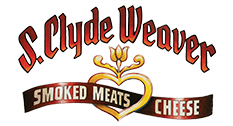



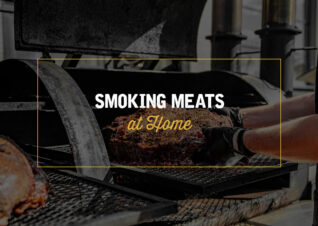
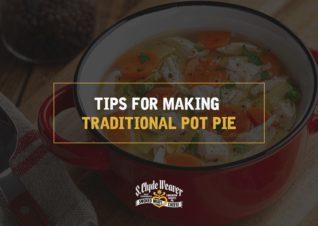
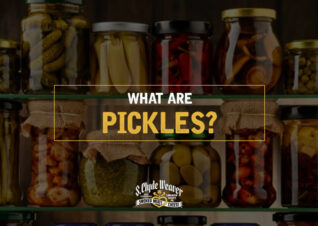



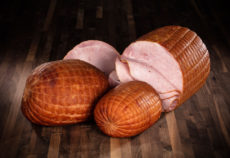

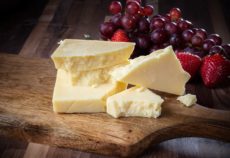
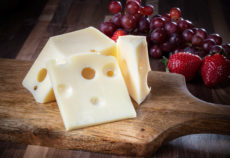
Thank you.